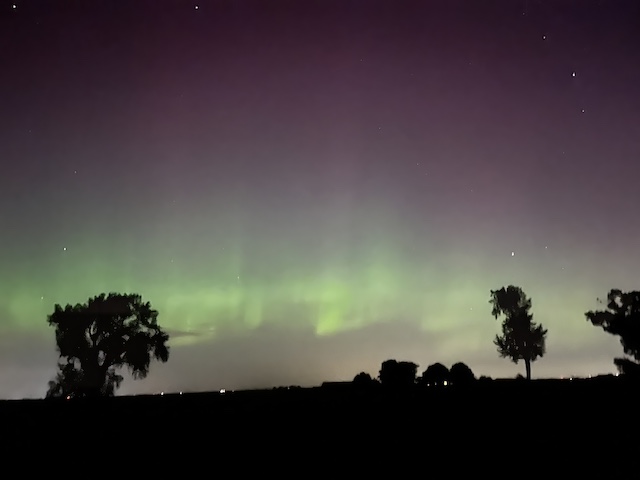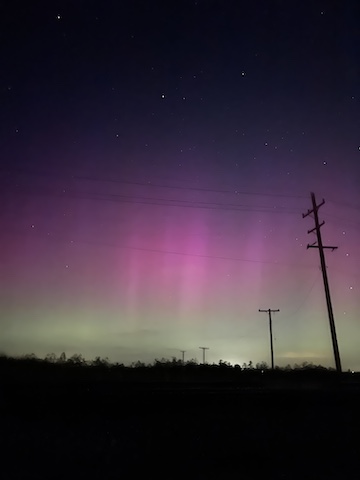The night of Sunday, August 11 and very early morning of Monday, August 12 was the peak of the annual Perseid meteor shower. It’s when the Earth passes through the densest remnant of the tail of the comet 109P/Swift-Tuttle and recurs every year in mid-August. As I often do during various meteor showers throughout the year, I ventured out to my dark sky viewing spot just west of Leland, Illinois to do some astrophotography, hoping to catch the trails of some larger meteors in my shots of the starry sky.

GETTING COMFORTABLE IN THE DARK
I set my camera up on its tripod, aimed it to the northeast toward the constellation Perseus, the region of the sky from where the Perseid meteors typically emanate, and waited for darkness to settle over the area. It was a beautifully comfortable, clear evening to be outside just taking in the sights and sounds of one of the rural regions of our Fox River Watershed. Birds hustled toward their evening roosts, frogs croaked, crickets chirped, and as darkness approached, a pack of coyotes began to howl in the not-too-far distance! Night-sky photography is one of my favorite activities for the very reason of experiencing these sights and sounds prior to the main event of photographing the heavens. Sitting in my chair watching and listening to nature is very peaceful and relaxing for me.
It takes a while for total darkness to fall in the summer months. The sky to the northwest remains relatively bright for over an hour after sunset. That doesn’t preclude taking pictures of the stars in the twilight, but generally the best results are attained under the darkest conditions possible. On this evening, a waxing quarter moon was adding light to the scene. The best conditions for night sky photography are before or after the moon sets or during the new moon period. It wasn’t practical for me to wait for moonset to begin my serious photography of the Perseids, so once the moon began casting shadows, I knew it was time for me to start.
TAKING PHOTOGRAPHS
I began taking 15 second exposures of Perseus every other minute or so to get a big enough sample of pictures to make it most likely I’d capture a meteor or two. After about fifteen minutes of doing this, I noticed some motion in the sky to the north in my peripheral vision! I turned to look directly to the north and saw ghostly greyish-white pillars of light slowly traversing the northern horizon! I knew that these pillars were part of the aurora borealis, took out my cellphone and used its camera to take pictures of the phenomenon. The camera’s longer exposure feature allows more light to its sensor than reached my retinas as I viewed the aurora with my naked eye. The view from the camera showed greater detail of the structure of the aurora and showed the magnificent colors that I couldn’t see with my own eyes in the dim light.
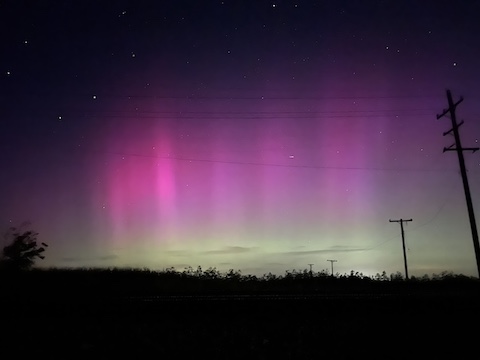
SOME BASIC AURORAL SCIENCE
I knew that there was a small chance of seeing the aurora borealis in northern Illinois that evening as the NOAA space weather site had mentioned that several coronal mass ejections (CME’s) had taken place over the past couple of days and a couple of them seemed to be Earth-bound. This hasn’t been too unusual lately as the Sun is in what’s known as its solar maximum period, which takes place roughly every eleven years. The solar maximum period is marked by an increase in the number of sunspots, flares, and prominences on the surface of the Sun. The Sun’s magnetic field also flips during a solar maximum period. This increased magnetic activity on the Sun is important in the formation of CME’s which are the catalyst for increased aurora activity here on Earth. The CME’s which typically erupt from near sunspots, flares, and prominences (all areas of intense magnetic activity on the Sun), shoot large amounts of highly magnetized plasma from the Sun into space. When these CME’s are directed toward the Earth, that plasma reaches the the Earth’s magnetic field anywhere from 15 hours to several days after leaving the Sun. They don’t travel at a uniform speed which makes it difficult for forecasters to pinpoint the exact time of arrival on Earth and they aren’t always directed right at the Earth.

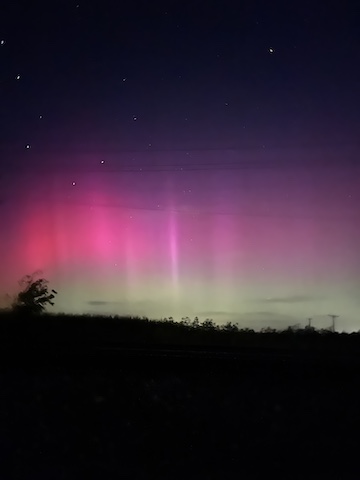
Once a CME has hit the Earth’s magnetic field, the charged particles from the Sun are accelerated along the lines of our planet’s magnetic field toward both the North and the South poles. The accelerating particles collide with atoms of oxygen and nitrogen more frequently near the two poles, infusing the atoms with a surplus of energy that results in light being emitted. The color of the light is determined by the type of atom that has been energized by the solar particles.
However it happens, when it does, viewers on Earth are sometimes treated to a beautiful auroral display. The stronger the CME, the farther south in the northern hemisphere the auroras become visible. Lately, the CME’s have been quite powerful and have produced beautiful auroral displays much farther south than normal. In addition to the latest display on August 11-12, we were treated to another spectacular display back in early May 2024. We can expect to see more of these beautiful displays in the coming months as the latest estimates of the duration of the solar maximum put the strongest part of the period between July, 2024 and January, 2025.
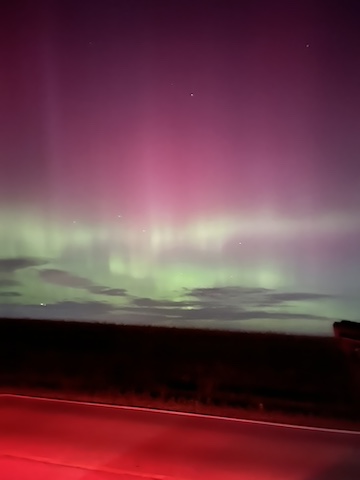
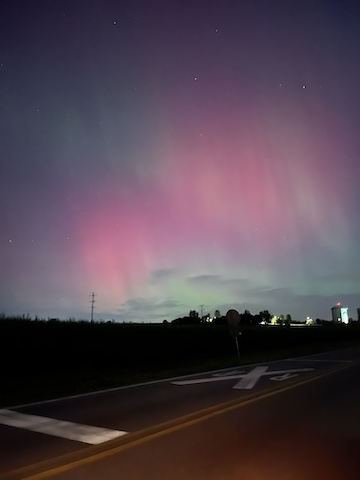
INCREASE YOUR ODDS
While it might seem like blind luck to witness the aurora borealis in the Fox River valley, there are ways to increase your odds of seeing them by visiting one of the many space weather websites that are on the worldwide web. They issue forecasts about dates and times when it’s more likely that the aurora borealis may be visible in our area. While not foolproof, these sites can certainly improve your odds of seeing auroras.
Getting out under the stars is never a waste of time even if the auroras don’t appear. There are lots of amazing things to see in the heavens and lots of wonderful terrestrial sights and sounds to experience once the Sun dips below the horizon! Until next month, I wish you luck in getting out to explore the night sky and perhaps see an aurora! Putting in the time to observe them is worth the effort when you can see sights like these! Together we keep on Fixin’ the Fox!
